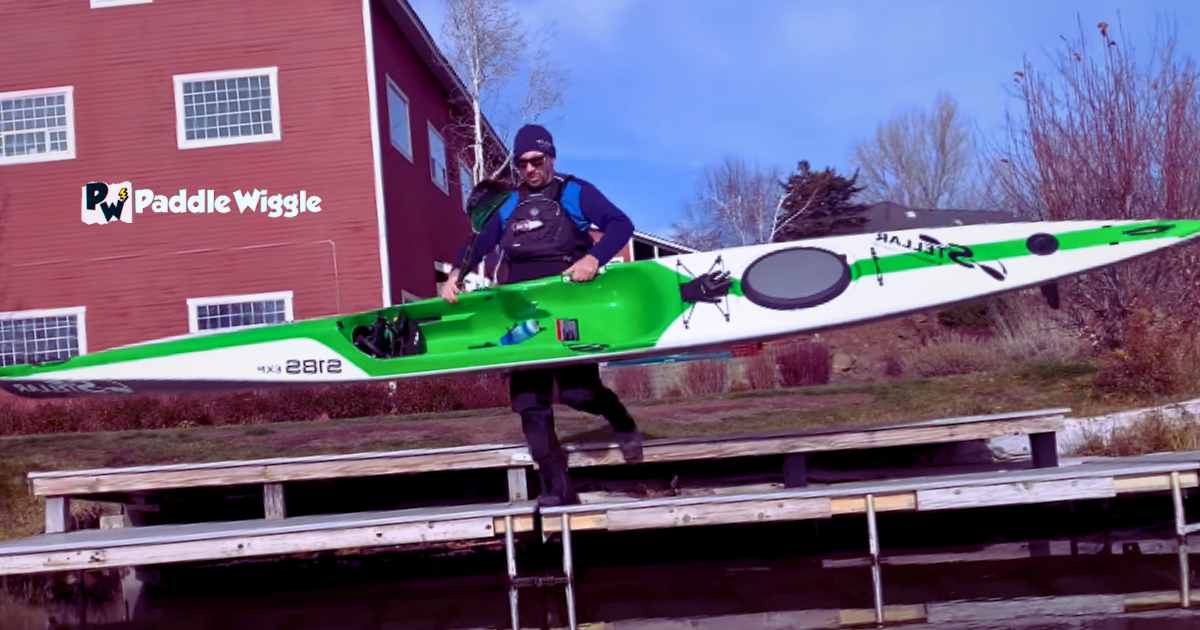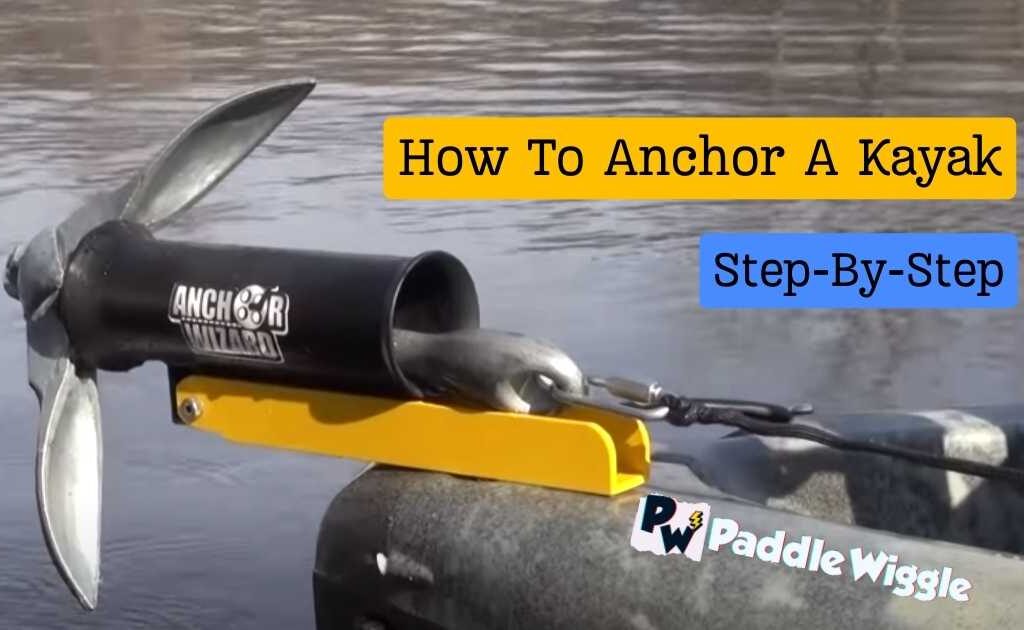Choosing the right kayak size is crucial for a comfortable and enjoyable paddling experience. Have you ever wondered, “What size kayak do I need for my height and weight?” If so, you’re in the right place.
The size of your kayak directly affects your performance and safety on the water. A kayak that is too small can feel cramped and unstable, while a kayak that is too large may be challenging to maneuver.
In this guide, we’ll dig into all the important stuff about choosing the right kayak size. We’ll stress why it’s a big deal – not just for your comfort but also for your safety on the water. We’ll give you tips on using kayak size charts and why it’s a good idea to try out kayaks in person.
Let’s dive in!
Contents


Understanding Kayak Dimensions: Length And Width
Understanding its dimensions is crucial. The length, width, and volume of a kayak play a significant role in determining its performance on the water. Let’s take a closer look at how these dimensions impact your kayaking experience.
How Length, Width, and Volume Impact Kayak Performance
The length of a kayak refers to how long it is from bow to stern. A longer kayak tends to be faster and more efficient when paddling in a straight line. It can glide through the water with ease and maintain speed over longer distances. On the other hand, shorter kayaks are more maneuverable and easier to turn quickly.
The width of a kayak is measured from one side of the hull to the other. A wider kayak offers greater stability on calm waters as it has a larger base for support. This makes it ideal for beginners or those who prefer a more stable ride. However, wider kayaks may sacrifice some speed due to increased resistance against the water.
Kayak volume refers to the amount of space inside the vessel. It determines factors such as legroom, storage space, and cockpit size. Kayaks with high volume are big and have lots of space for storing your stuff. They also have room for people with long legs or who want more space for their legs. On the other hand, kayaks with low volume are smaller and fit snugly, which helps you have better control when you need to turn or move around.
Different Measurements Used to Describe Kayak Dimensions
Kayak dimensions are typically described using physical measurements such as length and width in feet or meters. For example:
- Length: 10 feet / 3 meters
- Width: 30 inches / 76 centimeters
Sometimes, you might see words like “medium volume” or “high volume” when talking about certain kayak models. These words tell you how much space is inside the kayak and give you an idea of how big it is.
Understanding Kayak Dimensions When Buying one
Understanding the dimensions of a kayak is crucial when selecting the right one for your needs. Each dimension plays a role in determining how the kayak will perform on the water. Here’s why it matters:
- Stability: The width and volume of a kayak directly impacts its stability. If stability is important to you, choosing a wider or higher-volume kayak would be beneficial.
- Maneuverability: The length and width of a kayak affect its maneuverability. If you plan on navigating tight spaces or enjoy quick turns, a shorter and narrower kayak would be more suitable.
- Speed: Longer kayaks are generally faster, while shorter kayaks sacrifice some speed for increased maneuverability.
- Comfort: Knowing about volume makes sure there’s space for your gear and lets you pick a kayak that fits your legs comfortably
Thinking about these things will help you pick a kayak that’s just right for you, making your kayaking experience even more enjoyable.
Average Kayak Size by Type and Water Type
When it comes to kayaking, one important factor to consider is the size of the kayak. The average kayak size can vary depending on the type of kayak and the water type it is intended for. Various kinds of kayaks, like the ones for fun, long trips, or rough water, come in different sizes to fit what you want and like.
The kayak’s size can also depend on the kind of water it’s meant for, like peaceful lakes or wild, fast rivers. Knowing the usual size of kayaks for different types of water can help people pick the best kayak for their trips.
Let’s explore average kayak size by kayak type and water type:
Average Size Of Recreational Kayaks
For calm lakes, slow rivers, and ponds, the average length of a recreational kayak ranges from 10 to 12 feet. These kayaks are typically around 28 to 30 inches wide. If you’re kayaking in open water for fun, go for a kayak that’s a bit longer, like 12 to 14 feet, and keep it the same width.
Average Size Of Touring Kayaks
If you want to go on day trips or do coastal kayaking, think about using a touring kayak. They’re usually around 12 to 14 feet long and are not very wide, about 22 to 26 inches across. If you’re planning longer trips on open water, choose a kayak that’s between 14 to 17 feet long and about 21 to 24 inches wide.
Average Size Of Fishing Kayaks
There are two main types: sit-on-top and sit-inside. Sit-on-top fishing kayaks typically range from 10 to 14 feet in length and have widths of about 30 to 36 inches. On the other hand, sit-inside fishing kayaks have similar lengths but tend to be slightly narrower, with widths ranging from approximately 28 to 32 inches.
Average Size Of Whitewater Kayaks
If you love thrilling whitewater adventures, there are special kayaks for you. Playboats, made for doing tricks on the river, are typically 5.5 to 7.5 feet long and about 23 to 27 inches wide. Creek boats, great for running rivers and creeks, are usually 7 to 9 feet long and about 24 to 28 inches wide.
Average Size Of Sea Kayaks
If you’re planning an ocean or open-water expedition, a sea kayak is the way to go. These kayaks are longer and narrower compared to recreational or touring kayaks. Sea kayaks typically measure between 16 to 18 feet in length and have widths ranging from approximately 21 to 24 inches.
Average Size Of Inflatable Kayaks
For those seeking versatility and portability, inflatable kayaks are a popular choice. The size of inflatable kayaks can vary greatly depending on the type and intended use. They generally range from 8 to 14 feet in length, with width varying based on the specific model.
Average Size Of Tandem Kayaks
Tandem kayaks, designed for two paddlers, come in both recreational and touring styles. Recreational tandem kayaks usually measure between 12 to 14 feet long, with widths of about 30 to 36 inches. Tandem touring kayaks are longer and more narrow. They’re usually around 16 to 18 feet long and about 26 to 30 inches wide.
Average Size Of Pedal-Drive Kayaks
If you like paddling without using your hands, especially for fishing or relaxed paddling, pedal-drive kayaks are a good choice. These kayaks are usually 10 to 14 feet long and about 32 to 36 inches wide.
Determining the Right Kayak Size for Your Height and Weight
To find the best kayak size for you, think about a few things. Like where you’ll be kayaking, whether it’s in lakes, rivers, or oceans. Also, consider what you want to do with your kayak, like fishing or touring. And think about what you like more, being stable in the water or being able to move around easily.
It’s important to consider your personal height and weight. These factors play a crucial role in determining the right kayak size that will provide comfort and control while paddling. It’s essential to consider these factors before making your final decision.
Kayak Length With Height Chart


Your height plays a significant role in finding a kayak that suits you. Taller individuals may require kayaks with larger cockpits or longer legroom to ensure they can comfortably fit inside the kayak’s seating area. On the other hand, shorter individuals may prefer kayaks with smaller cockpits for a snug fit.
Weight is another crucial factor to consider when choosing a kayak. It directly affects the kayak’s buoyancy and stability in the water. You need to ensure that the kayak has a weight capacity that comfortably supports your weight, taking into account any gear or equipment you plan to carry during your paddling adventures.
Let’s take a look at a height and kayak length chart that can guide you in making the right choice.
| Height Range | Body Weight Range | Suggested Kayak Length | Suitable Kayak Types |
|---|---|---|---|
| Under 5’5″ | 100-150 lbs | 8-10 feet | Small recreational or sit-in kayaks |
| 5’5″ – 5’10” | 150-200 lbs | 10-12 feet | Recreational or touring kayaks |
| 5’10” – 6’2″ | 200-250 lbs | 12-14 feet | Touring kayaks or spacious rec kayaks |
| Over 6’2″ | 250+ lbs | 14+ feet | Longer touring or specialized kayaks |
Under 5’5″ (165 cm)
If you’re under 5’5″ (165 cm) tall, it’s recommended to opt for a kayak length between 8 to 10 feet. Short recreational or small sit-in kayaks are suitable for petite individuals like yourself. These kayaks provide maneuverability and are perfect for exploring calm waters or smaller bodies of water.
5’5″ to 5’10” (165 cm to 178 cm)
For paddlers ranging from 5’5″ to 5’10” (165 cm to 178 cm) in height, a kayak length ranging from 10 to 12 feet is recommended. You have more options. These versatile kayaks offer stability and are suitable for various activities such as fishing, day trips, or even overnight camping adventures.
5’10” to 6’2″ (178 cm to 188 cm)
If you’re between 5’10” and 6’2″ tall (about 178 cm to 188 cm), think about getting a kayak that’s 12 to 14 feet long. Touring kayaks for long trips or recreational kayaks with more legroom would work well for you. These kayaks have enough space and comfort for longer trips on lakes, rivers, or even on the coast.
6’2″ and taller (188 cm and taller)
If you’re really tall, like 6’2″ (188 cm) or even taller, go for a kayak that’s 14 feet or longer. Look for touring kayaks, sea kayaks, or ones made for tall folks. They have more legroom and are more stable, making your kayaking experience comfy no matter where you paddle.
Determining the right kayak size is not solely based on height alone. Factors such as weight and intended use also come into play. It’s important to consider these factors when making your decision to ensure optimal performance and comfort on the water.
Different types of kayaks have specific size recommendations based on their intended purpose. For example:
- Sea kayaks are longer and narrower than recreational kayaks, providing better tracking and efficiency in open waters.
- Fishing kayaks often have wider hulls for improved stability while casting lines or reeling in big catches.
Remember that the volume of a kayak affects its stability and buoyancy in different water conditions. Higher volume provides more buoyancy but may sacrifice maneuverability, while lower volume offers increased responsiveness but may compromise stability.
Additional Kayak Sizing Tips


When it comes to choosing the right kayak, size matters. The size of your kayak can greatly impact your overall experience on the water. Apart from thinking about weight and how stable the kayak is, there are a few more size tips to remember. These tips can make sure you get a kayak that fits you well and lets you be really comfy and move around easily.
Here are a few additional tips to keep in mind when choosing the right kayak size:
- If you’re near the upper end of the weight range, consider a kayak with a higher weight capacity for added stability.
- Remember, these are basic rules, and everyone might like something different. The best way is to try out different kayaks and pick the one that feels most comfy and fits what you want.
- Kayak designs and sizes can vary among manufacturers, so always consult the specific manufacturer’s recommendations when available.
- Consider your skill level when selecting a kayak. If you’re a Beginner, you might like kayaks that are wider and more stable because they help you stay balanced. But if you’ve got some experience, you might go for slimmer, faster kayaks that need better skills to handle.
Remember, getting the right-sized kayak is super important for a comfy and fun time on the water. Think about how tall you are, how much you weigh, what you want to do with the kayak, and what you like before you decide which one to go for. Happy paddling!
Factors To Consider Beyond Height and Weight
There are several factors you need to consider beyond just your height and weight. Let’s dive into these important factors that will help you find the perfect kayak for your needs.
Skill Level
Your experience and skill level in kayaking play a crucial role in kayak selection. If you’re just starting out, go for wider and stable kayaks. They help you keep your balance and are easier to control. When you get better at kayaking, you might like the narrower, more agile ones. They let you paddle faster and do more advanced moves.
Kayaking Environment
Consider where you plan to kayak. Different types of water require different kayak designs. For calm lakes or slow rivers, a recreational or touring kayak would be suitable. If you’re planning on tackling whitewater rapids or venturing into the open ocean, specialized kayaks designed for those environments would be necessary. Make sure your chosen kayak is appropriate for the intended environment.
Type of Kayaking
Determining the primary purpose of your kayaking adventure is essential in selecting the right kayak size. Are you into recreational paddling, touring, fishing, whitewater adventures, or sea kayaking? Each type of kayaking may require a specific kayak design and features. For example, if fishing is your main focus, look for a sit-on-top kayak with fishing rod holders and storage compartments.
Cockpit Size
The cockpit or seating area of a kayak should accommodate your body comfortably. It should be easy to enter and exit without feeling cramped or restricted. Make sure there is enough room to move your legs and torso comfortably while paddling. A well-fitting cockpit enhances comfort and control during your kayaking trips.
Weight Capacity
Checking the weight capacity of a kayak is crucial before making a purchase decision. The weight capacity is the most weight a kayak can handle without getting wobbly or unsafe. It would help if you thought about not only how much you weigh but also any stuff you want to bring on your kayaking trips. Only load up the kayak a little because it can make it harder to steer, and it might tip over.
Paddle Style
The type of paddle you plan to use can influence your kayak choice. If you like using a two-sided paddle, get a kayak made for that. If you prefer a one-sided paddle, pick a kayak that’s good for it. The kayak’s shape and width affect how well you can paddle with the kind of paddle you like.
Transportation and Storage
Consider how you’ll transport and store the kayak when it’s not in use. If you don’t have much space at home or need to carry your kayak on your car roof, find one that’s easy to move around and fits in those spaces. Some kayaks can be inflated or taken apart, which makes them easier to carry and store.
Comfort Features
Comfort is crucial during longer kayaking trips. When you’re picking a kayak, check if it has seats you can adjust, comfy backrests with padding, and places for your feet that you can change. These things let you make the kayak just right for you. They help your back and legs feel good while you’re paddling.
Hull Shape
Different hull shapes offer different characteristics in terms of stability, speed, and maneuverability. Flat-bottomed hulls provide better initial stability, making them suitable for beginners or calm water conditions. V-shaped hulls offer increased speed but may sacrifice some stability. Pontoon-style hulls provide exceptional stability but are slower compared to other designs. Choose a hull shape that aligns with your intended use and skill level.
Material
Kayaks come in various materials such as plastic, fiberglass, or composite materials like carbon fiber or Kevlar. Each material has its advantages and considerations in terms of durability, weight, and cost. Plastic kayaks are generally more affordable and durable but can be heavier. Fiberglass and composite kayaks are lighter and offer better performance but tend to be more expensive.
Balancing Stability, Speed, and Agility with Kayak Width
Finding the right size kayak is crucial, and agility on the water. Different types of kayaks are designed with varying widths to cater to specific needs. Let’s explore how the width of a kayak affects its performance and what size kayak you may need for your adventures.
Recreational, Touring, Whitewater, and Sea Kayaks
Kayaks come in different shapes and sizes to accommodate various activities such as recreational paddling, touring expeditions, whitewater adventures, or sea exploration. Each type of kayak has a specific width that influences its characteristics on the water.
Stability for Beginners: Wider Kayaks
If you’re new to kayaking or prefer a more stable ride, wider kayaks are an excellent choice. The wider the kayak’s hull or body, the more stability it offers. This makes them ideal for beginners or those who enjoy leisurely paddling in calm waters.
- Pros: Wider kayaks provide better initial stability, making them easier to balance.
- Cons: They may sacrifice some speed and maneuverability compared to narrower kayaks.
Speed and Agility: Narrower Kayaks
For those seeking speed and agility in their kayaking adventures, narrower kayaks are the way to go. These sleeker designs cut through the water with less resistance but require more skill to maintain balance.
- Pros: Narrower kayaks offer enhanced speed and maneuverability.
- Cons: They can be less stable initially and require more experience to handle confidently.
Final Words
To pick the perfect kayak size, you need to think about a few things. First, think about how good you are at kayaking and what you want to do with your kayak, like just paddling around for fun or doing special stuff like fishing. Also, consider how tall and heavy you are because that affects what size kayak is comfy for you.
If you’re new to kayaking, it’s better to have a stable kayak instead of one that’s super fast. The kind of kayaking you want to do matters, too. If you’re just cruising around, a wider kayak is good, but if you plan on exploring the sea or making long trips, a narrower kayak might be better.
And if you’re tall, you might like a longer kayak with more room, but if you’re shorter, a smaller one could be cozier. The best way to know for sure is to try different kayaks to see what feels just right.
So, by thinking about all these things, you can find the kayak size that fits you best and makes your time on the water awesome and comfy.



